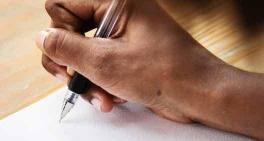SUPREME COURT NOTEBOOK: Diabetes, decisions and justice math
News Releases
Visitors attending Supreme Court arguments surrender their electronics on entering the courtroom. So if something rings, chimes or buzzes, it's likely the device's owner is dressed in a black robe.
Last year, a justice's cellphone went off. But last month, when four electronic pings sounded during an argument, the device was different. It belonged to Justice Sonia Sotomayor and was alerting the justice, who is diabetic, that her blood sugar was urgently low.
The 63-year-old justice has had diabetes since childhood, but the sound was the first public notice that she was using a continuous glucose monitor.
Sotomayor's use of the device doesn't indicate a change in her health, experts told The Associated Press, but it does show her embracing a technology that has become more popular with Type 1 diabetics.
In 2013, when Sotomayor did an interview with the American Diabetes Association's "Diabetes Forecast," the magazine reported she was not using one. But in recent years the devices, which use sensors inserted under the skin, have become more accurate, said Cleveland Clinic endocrinologist Kevin Pantalone.
Monitors give users continuous information about glucose levels, rather than the snapshot they get from testing their blood with a finger prick. Information from the sensor gets sent every few minutes to a device where a user can see it charted. Most devices sound alarms at low and high glucose levels. Some monitors work with an insulin pump, which continuously delivers insulin.
It's not clear when Sotomayor began using the technology. She declined comment through a court spokeswoman. But the dinging during arguments on March 21 followed an incident in January where emergency medical personnel treated her at home for symptoms of low blood sugar.
Aaron Kowalski, an expert in diabetes technologies, said an event like that can prompt a person to try a monitor, but even people using the devices can experience low blood sugar that might result in an emergency call. Kowalski, who leads the research and advocacy efforts of JDRF, the Type 1 diabetes research organization, said about 15 percent to 20 percent of Type 1 diabetics now use such a device.
Related listings
-
Drug companies want Supreme Court to take eye drop dispute
News Releases 04/01/2018Eye drop users everywhere have had it happen. Tilt your head back, drip a drop in your eye and part of that drop always seems to dribble down your cheek.But what most people see as an annoyance, some prescription drop users say is grounds for a lawsu...
-
Court: Government can't block immigrant teens from abortion
News Releases 03/31/2018A federal court in Washington has told the Trump administration that the government can't interfere with the ability of pregnant immigrant teens being held in federal custody to obtain abortions.A judge issued an order Friday evening barring the gove...
-
Maryland redistricting case comes before Supreme Court
News Releases 03/22/2018The Supreme Court is taking up its second big partisan redistricting case of the term amid signs the justices could place limits on drawing maps for political gain.The justices are hearing arguments Wednesday in an appeal filed by Republicans in Mary...

Our Eugene Oregon Bankruptcy Practice
Since 2005, Erin Uhlemann has helped individuals and families facing financial difficulties file for bankruptcy relief. Erin's compassion and understanding of the law have helped hundreds of Oregonians achieve a financial fresh start. She started Willamette Valley Bankruptcy to focus on helping clients with bankruptcy and debt issues in the Lane County Area. Erin understands that choosing a bankruptcy attorney who makes you feel comfortable and confident can be as difficult as deciding whether to file a bankruptcy case. Because she knows that filing bankruptcy is not something that you planned to do or look forward to doing, Erin strives to make the process as easy as possible.
Because most people facing bankruptcy do not have extra money to pay fees, Willamette Valley Bankruptcy offers low upfront fees and will work with you to set up affordable payment plans to pay attorney fees and court filing fees. Consultations are always free so that you can get the answers you need before making any sort of financial commitment. If you have questions about attorney fees and payment plans, you can call or email today to get these questions answered.




